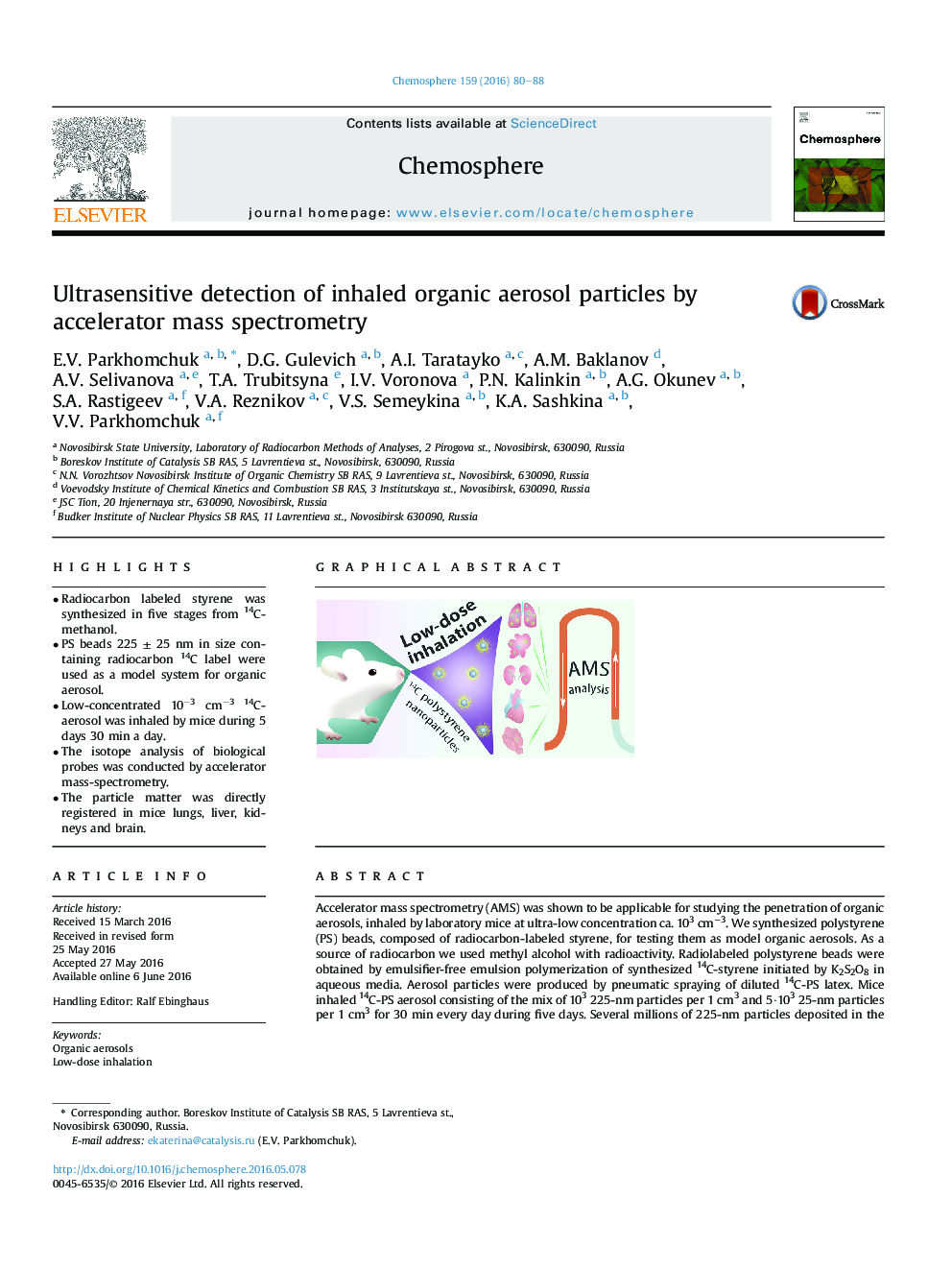| Article ID | Journal | Published Year | Pages | File Type |
|---|---|---|---|---|
| 4407407 | Chemosphere | 2016 | 9 Pages |
•Radiocarbon labeled styrene was synthesized in five stages from 14C-methanol.•PS beads 225 ± 25 nm in size containing radiocarbon 14C label were used as a model system for organic aerosol.•Low-concentrated 10−3 cm−314C-aerosol was inhaled by mice during 5 days 30 min a day.•The isotope analysis of biological probes was conducted by accelerator mass-spectrometry.•The particle matter was directly registered in mice lungs, liver, kidneys and brain.
Accelerator mass spectrometry (AMS) was shown to be applicable for studying the penetration of organic aerosols, inhaled by laboratory mice at ultra-low concentration ca. 103 cm−3. We synthesized polystyrene (PS) beads, composed of radiocarbon-labeled styrene, for testing them as model organic aerosols. As a source of radiocarbon we used methyl alcohol with radioactivity. Radiolabeled polystyrene beads were obtained by emulsifier-free emulsion polymerization of synthesized 14C-styrene initiated by K2S2O8 in aqueous media. Aerosol particles were produced by pneumatic spraying of diluted 14C-PS latex. Mice inhaled 14C-PS aerosol consisting of the mix of 103 225-nm particles per 1 cm3 and 5·103 25-nm particles per 1 cm3 for 30 min every day during five days. Several millions of 225-nm particles deposited in the lungs and slowly excreted from them during two weeks of postexposure. Penetration of particles matter was also observed for liver, kidneys and brain, but not for a heart.
Graphical abstractFigure optionsDownload full-size imageDownload as PowerPoint slide
